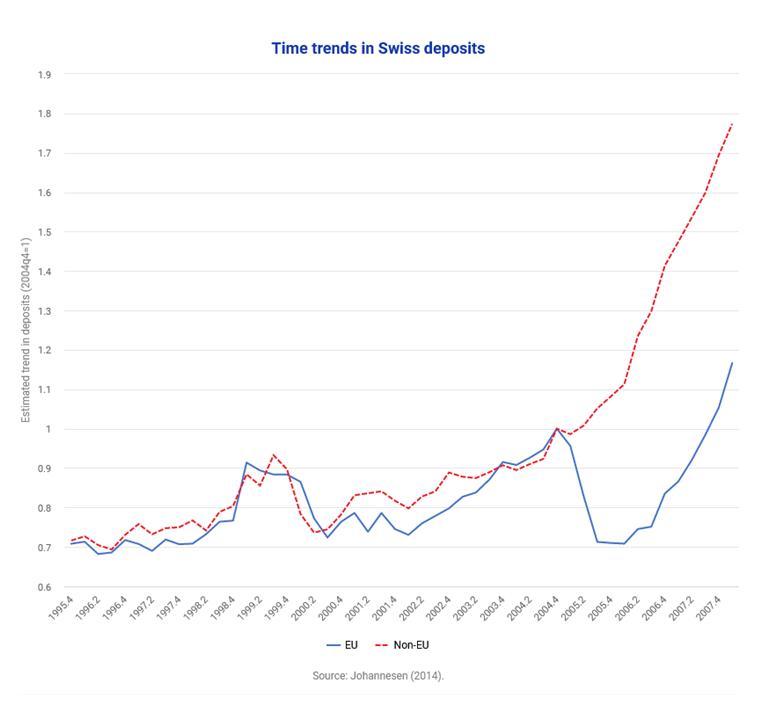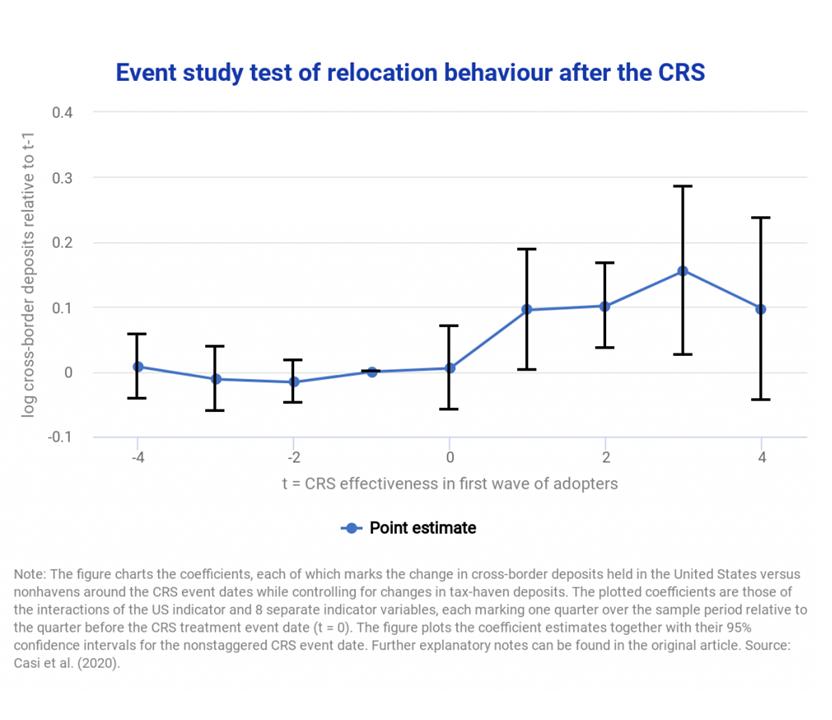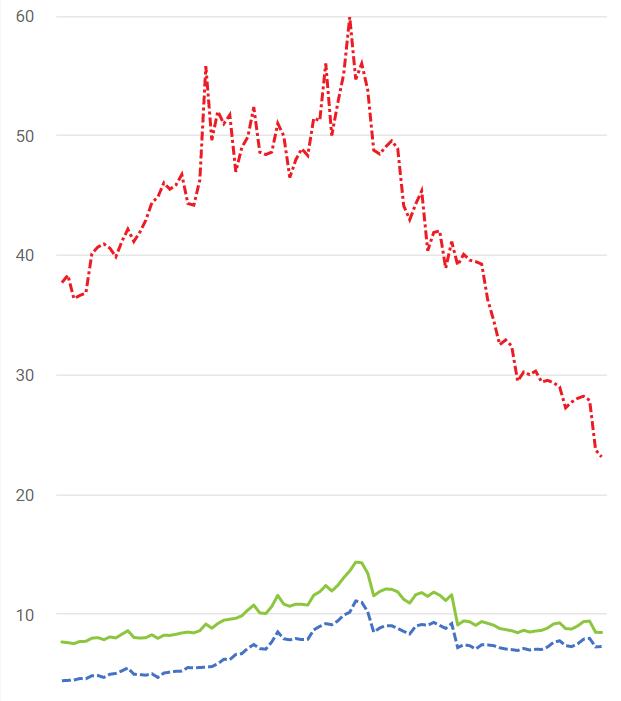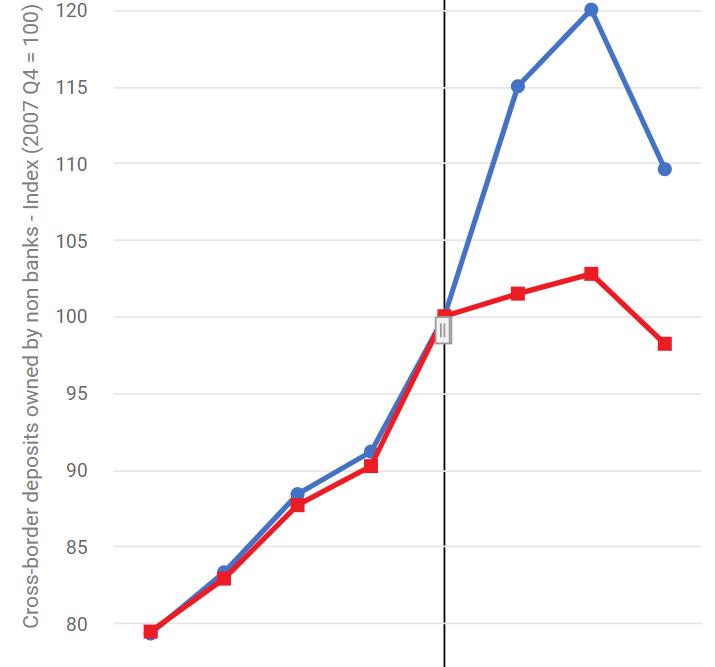Tax evasion and Swiss bank deposits
Bank Secrecy in Offshore Centres and Capital Flows: Does Blacklisting Matter?
Summary
In this study, Balakina et al. question the effectiveness of the “name and shame” approach, adopted by a number of international organisations and national governments to fight banking secrecy. This effort, led by the Financial Action Task Force (FATF) since 1999, consists of 49 international standard recommendations to prevent money laundering and terrorist financing practices. Noncompliant countries were added to blacklists of Non‐Cooperative Countries and Territories (NCCTs) thereby expected to be subject to a “stigma effect”.
The associated stigma effect could result in a decline of international capital flows towards blacklisted jurisdictions, for instance because banks might fear risking their reputation. In addition, flows from or to NCCTs are more closely monitored by national administrations, resulting in increased compliance costs for banks that are active in these countries. However, the authors note that a “stigma paradox” can also arise if NCCTs end up attracting investors who seek to avoid more stringent regulation.
Relying on international banking statistics from the Bank for International Settlements (BIS), the authors estimate the effect of FATF blacklisting on the volume of financial transactions. They compare the growth rate of financial flows before and after the blacklisting and for affected and non-blacklisted countries. In addition, they control for various macroeconomic and banking sector characteristics, such as depth and efficiency of the local financial industry or the quality of the supervisory system in place, as these might also influence the development of financial flows. In all the regression analyses that they conduct, the effect of blacklisting is statistically insignificant. In addition, the economic significance is positive which leads authors to conclude that, in general, the stigma effect does not exist.
Key results
- In the sample of 126 countries considered by Balakina et al., 29 have been blacklisted between 1996 and 2014. 12 of them are considered as developed economies and the remaining 17 are underdeveloped according to World Bank criteria.
- Capital flows seem to be attracted by market-friendly financial regulation and the independence of supervision from local political bodies.
- The authors do not find evidence that the stigma effect exists.
Policy implications
- The authors question the effectiveness of blacklisting, as they do not observe a significant change of capital flows to non-cooperative jurisdictions.
- Assuming that banking secrecy is the result of a demand-supply mechanism, they deem that blacklisting and other soft law practices are unlikely to end this structural phenomenon, deeply rooted in the incentives of offshore and onshore countries.
Data
Using international banking statistics from the Bank for International Settlements (BIS), Balakina et al. gather a panel dataset comprised of 126 countries over the 1996-2014 period. Their dependent variable, which captures banking flows, is constructed from the total foreign claims aggregate on an immediate borrower basis.
The authors complement these data with the “Global Financial Development Database” (GFDD) of Čihák et al., that provides indicators of the depth and efficiency of each country’s financial industry, and with data from the “Banking Regulation Survey” of Barth et al. Macroeconomic controls are taken from IMF and World Bank databases.
Methodology
Balakina et al. estimate a variety of regression models to assess the effect of FATF blacklisting on the growth of banking flows. They run several robustness checks to test the reliability of these results, notably considering the possible endogeneity of blacklisting to the volume of financial transactions.
Go to the original article
This article was published by the Review of Financial Economics and can be found at ScienceDirect.
A working paper version of the article released in May 2016 can be downloaded from the SSRN website.
This might also interest you
Cross-border tax evasion after the Common Reporting Standard: Game over?
Hidden treasures: The impact of Automatic Exchange of Information on cross-border tax evasion
The deterrence effect of whistleblowing: An event study of leaked customer information from banks in tax havens



